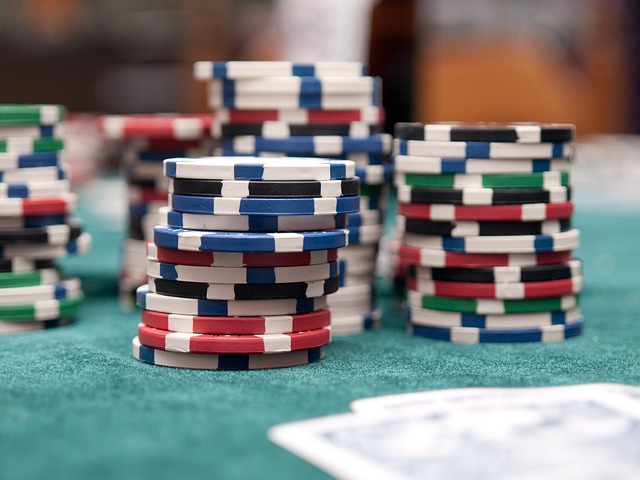So, there are 10 people at the table. Poker, like many card games, is played in a circle (clockwise), but there is one peculiarity – three specific player positions that are shifted by one player at the end of each hand.
These positions are:
- Dealer – denoted by a disc (button) with a “D” on it (in online poker) or “DEALER” in live poker.
- Small Blind (SB) – the next player after the dealer, who must make the lowest starting bet (usually half of the big blind).
- Big Blind (BB) – the next player after the small blind, who must make the full starting bet.
The small and big blind bets are made to ensure that there is always money in the pot. The three positions – Dealer, Small Blind and Big Blind – shift one player clockwise after each hand played, so if you were the Big Blind, you will be the Small Blind in the next hand, and the Dealer after that.
Each player is dealt two cards. After looking at them, players can make one of five decisions:
- Fold – not to place the required bet, automatically folding and forfeiting the game.
- Fail (check) – by skipping the bidding, pass the turn to the next player. This is only possible if you have not yet bet before you.
- Call – to accept the bet, i.e. to make the same bet as the previous bidder.
- Bet – to place a bet if one has not been placed before.
- Raise – To raise a bet made by a previous player.

Cards are dealt. The player who is seated at the table immediately after the big blind (assuming this is you) starts the game (betting). You look at your cards and assess whether they are good enough to play. Assuming the cards are good enough, you decide to respond by making the bet that the big blind automatically made before you. If your cards are very strong, it will be more correct to raise.
It is now the turn of the next player behind you to act clockwise. Suppose he was dealt weak cards, he decides not to bet and folds. Each player makes this decision until the turn comes to the small blind. The player in that position has already automatically placed half the starting bet. Let’s say you are at a $0.50/$1 table, so the small blind has automatically bet $0.50 from the start. In order to continue the game, that player must place the other half of the bet, which in this example is $0.50. The next player after him and the last player to act is the big blind, who has already automatically bet $1. If nobody raises, then he only needs to not bet to continue the game without making a bigger bet. This completes the stage of the game before the community cards are dealt, called preflop.
The bets are placed. Someone has exited the game. The preflop phase is over and the flop begins – three community cards are opened on the table. Players can now see what hands they have made, based on the two cards in their hand and the three cards on the table. Often you won’t have a full hand, you might be missing one or two cards – we’ll call this a ‘draw’, i.e. there is a chance to make the hand you need by opening the next community cards (turn and river). Later you will learn how to evaluate your chances and options, but for now let’s take our time and get back to the hand. Now, just like before the flop, you assess how strong your hand is (two in your hand and three on the table) and make your decision – not to bet, to bet, to raise or to fold (folding is recommended only if you have bet before – it may happen that everyone skips betting and you get a so-called free card). It should be noted that on the flop, turn and river, the players immediately behind the dealer clockwise – the small blind, then the big blind, and so on – must make their decision first. The dealer has the last word. This is the main difference from the pre-flop algorithm, where the player after the big blind has the first say. On the flop, turn, river, the player immediately after the dealer makes the first move – small blind, big blind, etc. It is possible that both the small blind and the big blind will fold preflop, in which case the player first after the dealer will act first.
When all players have bid and the bets are even, the fourth community card (the turn) is dealt. Now you have to evaluate both your cards and the possible opponents’ hands, taking into account the six cards. The possible actions are the same – don’t bet, bet, raise or fold.
After the turn comes the river – the last card on the table, the fifth card, is dealt. The action follows the same pattern as in the previous stages of the game. At the end of the hand, when the bets are even, players open their cards for a showdown. The strongest hand wins and the owner takes all the money in the pot. If there are two or more identical hands, the pot is split into two or more equal parts.
